March itinerary in Japan Day 2 (Hiroshima prefecture)
(Wednesday, March 23)
Table of contents
1. Hokoku Shrine, Five-storied Pagoda
1. Hokoku Shrine, Five-storied Pagoda
I went to Miyajima (the Island of Itsukushima) on March 23rd. The public transportation I used is as follows.
Depart Hiroshima Station at 7:50, Sanyo Line “bound for Iwakuni”, arrive at Miyajima-guchi Station at 8:18
Depart JR Miyajima Ferry at 8:30, “bound for Miyajima Pier”, arrive at Miyajima Pier at 8:40, Total fare Yen 600
I left early in the morning, but Miyajima Ferry was quite crowded with junior high school and high school students on school trips.
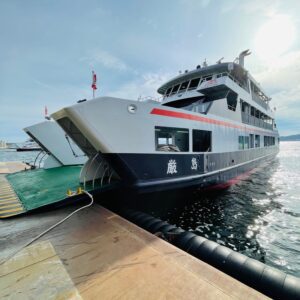
Miyajima is famous as one of the three most scenic spots of Japan. Matsushima in Miyagi and Amanohashidate in Kyoto are also the three most scenic spots of Japan. I went to Matsushima in September 2021 and Amanohashidate in October 2021. Therefore, by visiting Miyajima this time, I was able to go to all the three most scenic spots in Japan within a year.
The statue of Kiyomori Taira is located just off Miyajima Pier. Itsukushima Shrine was built in the current form of Shinden-zukuri, and the culture of Kyoto was transferred to Miyajima, which greatly contributed to the prosperity of Miyajima.
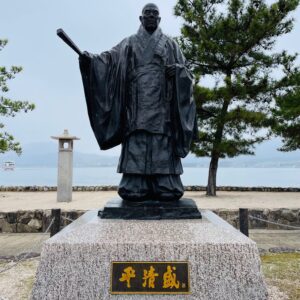
I walked from Miyajima Pier to Hokoku Shrine (Senjokaku) and the Five-storied Pagoda. It’s about a 10-minute walk.

Hideyoshi Toyotomi applied for Hokoku Shrine in 1587 and ordered Terumoto Mori to build it (actually, Ekei Ankokuji built it). It was built for the memorial service of the war dead. Hokoku Shrine is the subordinate shrine of Itsukushima Shrine.
It has come to be called “Senjokaku (1,000 tatami mats palace)” because it has the size of 857 tatami mats. Indeed, the interior was quite large.

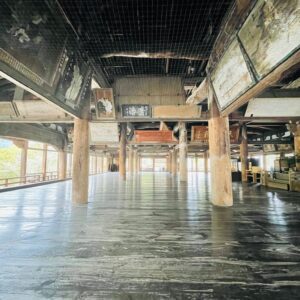
There is an oversized rice scoop in Hokoku Shrine. This was dedicated in prayer for victory, saying, “Scoop the victory with a rice scoop.”

The five-storied pagoda next to Hokoku Shrine was built in 1407. The height is 27.6m. It is a beautiful five-storied pagoda that incorporates the Zen Buddhism style. The five-storied pagoda is managed by Itsukushima Shrine as a building attached to Hokoku Shrine and the five-storied pagoda of Itsukushima Shrine.

Both the Hokoku Shrine (Senjokaku) and the Five-storied Pagoda are national important cultural properties. In addition, both Hokoku Shrine and Five-storied Pagoda are registered as component monuments of the world heritage “Itsukushima Shinto Shrine”.
Admission to Hokoku Shrine (Senjokaku): Adults Yen 100, high school students Yen 100, junior high and elementary school students Yen 50
2. Mt. Misen
I took the Miyajima Ropeway and headed for the summit of Mt. Misen. It is about a 15-minute walk from the location of the Hokoku Shrine (Senjokaku) and the Five-storied Pagoda to the Miyajima Ropeway Momijidani Station. In addition, a free shuttle bus runs from the entrance of Momijidani Park.
If you walk to Momijidani Station, you will find Shinomiya Shrine and Oguni Shrine (the end of Itsukushima Shrine). The stone torii was quaint.
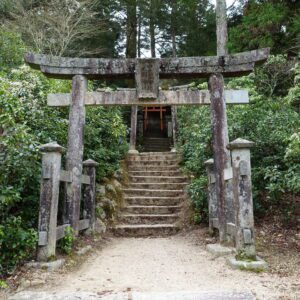

The Miyajima Ropeway operates every minute from Momijidani Station to Kayatani Station, so you can board at any time. However, since it runs every 15 minutes from Kayatani Station to Shishiiwa Station (it runs every 5 minutes during the busy season), you may have to wait up to 15 minutes at Kayatani Station. Therefore, the ride time from Momijidani Station to Shishiiwa Station is 15 to 30 minutes.
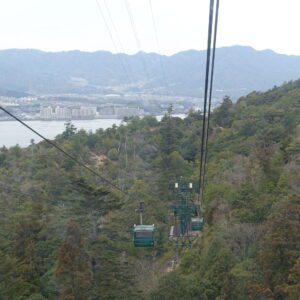
Miyajima Ropeway fee: Adults (12 years old and over): Round trip Yen 1,840, one way Yen 1,010, Children (6 years old and under 12 years old): Round trip Yen 920, one way Yen 510
When you get off at Shishiiwa Station, which is the terminal station of Miyajima Ropeway, you will find the Shishiiwa Observatory. The view of the islands of the Seto Inland Sea from the Shishiiwa Observatory was beautiful. It was a pity that it was cloudy.

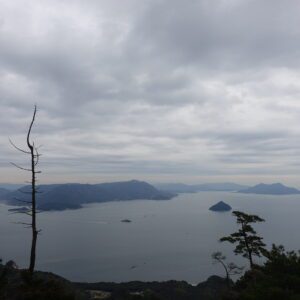
I headed to the summit of Mt. Misen from the Shishiiwa Observatory. It takes about 30 minutes to walk slowly along the mountain trail.
On the way to the summit of Mt. Misen, there is Misen-Hondo Hall and Kiezu-no-Reikado Hall. Misen-Hondo Hall is the place where Kobo Daishi built the Mido hall and practiced it for 100 days. The Daishoin Bonsho (temple bell) in the Misen-Hondo Hall was donated by Munemori Taira (the second son of Kiyomori Taira) in 1177 and is a national important cultural property.
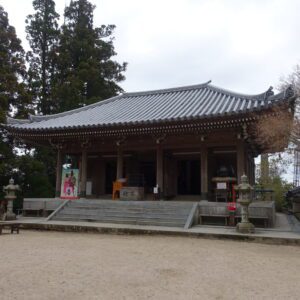
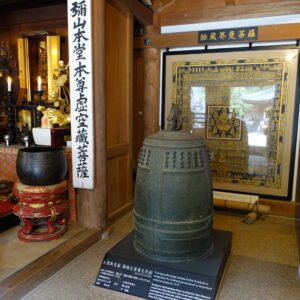
There was a pair of deer in the garden in front of Misen-Hondo Hall.
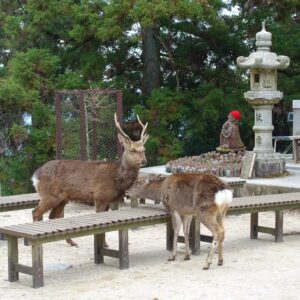
In Kiezu-no-Reikado Hall, the spiritual fire that Kobo Daishi practiced in 806 is still burning as “Kiezu no Hi (Eternal Flame)”. The Onigawara (ridge‐end tile) of Kiezu-no-Reikado Hall felt cute.
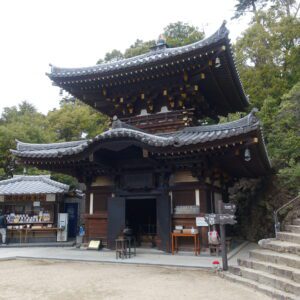
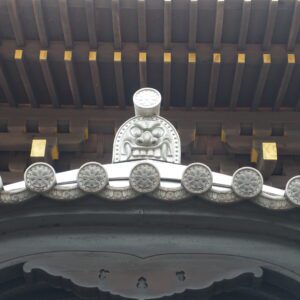
If you go up the stairs a little from Kiezu-no-Reikado Hall, you will find Sankido Hall. An ancient temple dedicated to the demon god, it is the guardian deity of Mt. Misen. Hirobumi Ito has a strong faith and has visited Sankido Hall frequently.
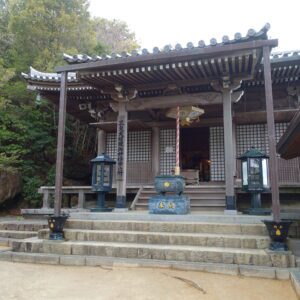
Monju-do Hall and Kannon-do Hall are located a short distance from Sankido Hall.

There are Kuguri-iwa Rock and Fudo-iwa Rock just a short walk from Monju-do Hall and Kannon-do Hall.
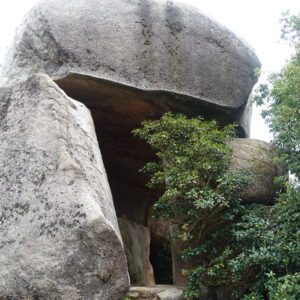

If you go through the Kuguri-iwa Rock, you will soon reach the summit of Mt. Misen (elevation 535 m). There are megaliths on the summit of Mt. Misen, and these megaliths are thought to be Iwakura. Iwakura is a rock where a god dwells. Mt. Misen was a mountain of mountain worship that targets Iwakura as a ritual.
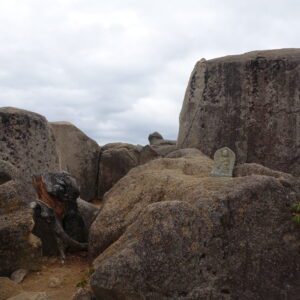
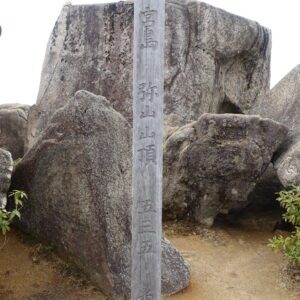
The view from the summit of Mt. Misen was also very beautiful. It was a pity that it was cloudy. Hirobumi Ito praised “The true value of one of the three most scenic spots in Japan lies in the view of the summit.”
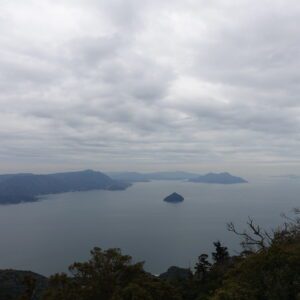
3. Hayashi family residence
I descended from the summit of Mt. Misen to Shishiiwa Station and took the Miyajima Ropeway to Momijidani Station. There is a Hayashi family residence on the way from Momijidani Station to Daishoin. It’s about a 10-minute walk.
The Hayashi family was one of the three Miyajima families of Itsukushima Shrine (Tanamori, Shokei, Monomoshi), who succeeded the Shokei (master of ceremonies). For this reason, the Hayashi family residence is called the Shokei residence. You cannot see inside from the gate. It is designated as a national important cultural property as an example of a Shinto priests house that is rare in Japan.
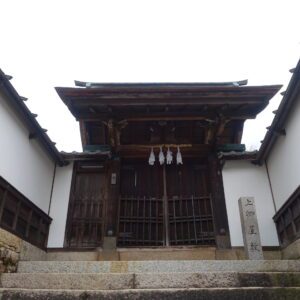
4. Daishoin Temple
The Daishoin Temple is about a 3-minute walk from the Hayashi family residence. Daishoin is the oldest temple in Miyajima. It is said that after Kukai (Kobo Daishi) returned from Tang, he went to Miyajima and practiced at Mt. Misen, and opened the Daishoin in 806.
There are many temples such as Niomon, Onarimon, Chokugan-do, Kannon-do, Mani-den, and Daishido in Daishoin Temple, and it was a valuable experience just to visit each of them. I regret not visiting the Henjo-kutsu Cave in the basement of Daishido this time.


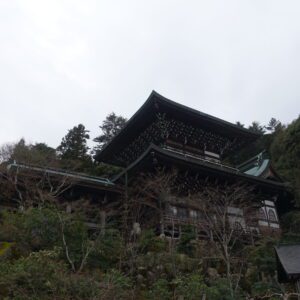
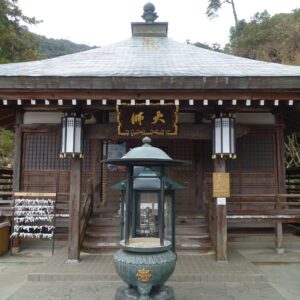
In particular, I enjoyed walking while watching the Gohyaku-rakan (Five Hundred Disciples of the Buddha) wearing red hats.

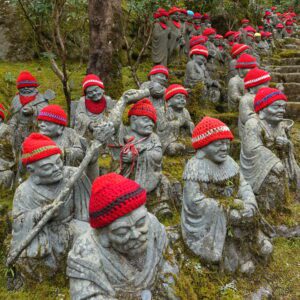
Many Hina dolls were displayed in the Kannon-do.

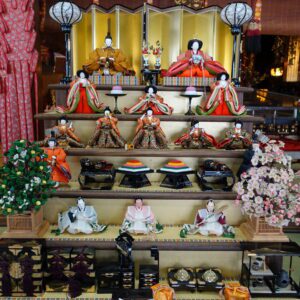
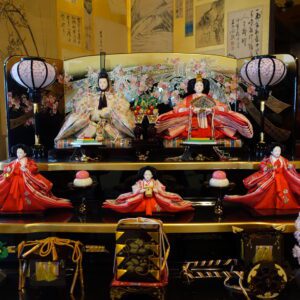
5. Itsukushima Shrine
After visiting the Daishoin Temple, I had lunch and went to Itsukushima Shrine. It is less than 10 minutes on foot from Daishoin to the entrance of Itsukushima Shrine.
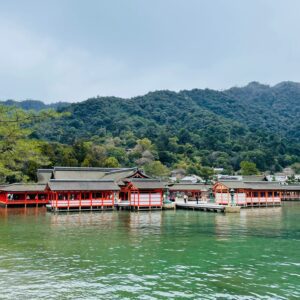
Itsukushima Shrine begins in 593 when Kuramoto Saeki, a local lord of the region, built a shrine dedicated to Ichikishimahime. The large shrine that stands on the sea today was set up by Kiyomori Taira. However, the shrine built by Kiyomori Taira was destroyed by fire, and the remaining shrine was built after 1240-1243.

Itsukushima Shrine and subordinate shrines are registered and designated as a World Heritage Site, national treasures, and national important cultural properties.
I have visited Itsukushima Shrine many times, and it is always a beautiful and wonderful shrine.
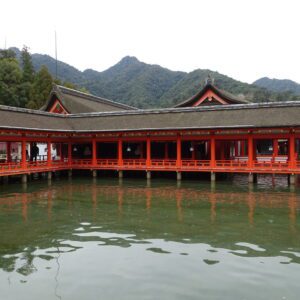
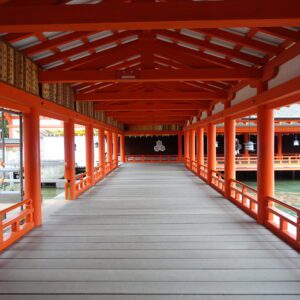
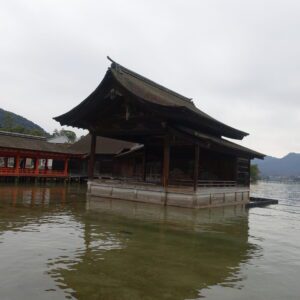
The reason I didn’t go to Itsukushima Shrine immediately after arriving at Miyajima this time was because it was low tide when I arrived at Miyajima. Itsukushima Shrine at low tide is considerably less attractive as shown in the photo below. The tide table is announced by the Miyajima Tourist Information Center.
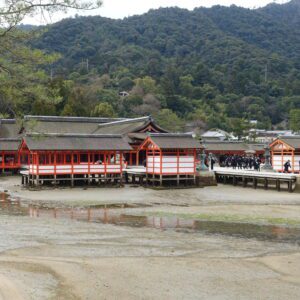
The 16m high wooden O-torii that stands on the sea is one of the three major torii in Japan (the others are Yoshino Kinpusenji Temple copper torii and Osaka Shitennoji Temple stone torii) and is a national important cultural property. It was a pity that it was not seen during the repair work now. The end date of the O-torii repair is undecided.
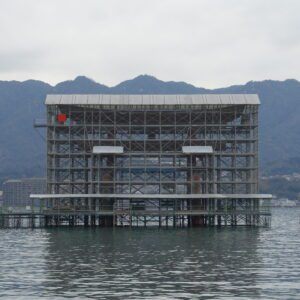
Itsukushima Shrine Admission: Adults Yen 300, high school students Yen 200, junior high and elementary school students Yen 100
Set fee with the treasure hall: Adults Yen 500, high school students Yen 300, junior high and elementary school students Yen 150
6. Daiganji Temple
Daiganji Temple is right next to the exit of Itsukushima Shrine. The opening of Daiganji Temple is unknown. It is said that it was revived by Ryokai from 1201 to 1203 during the Kamakura period.
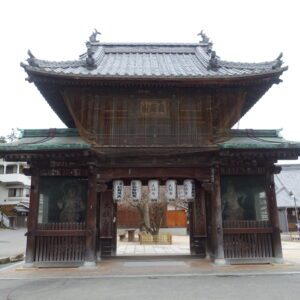
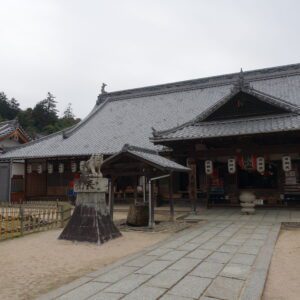
This time, I couldn’t go to the Tahoto, which belongs to Itsukushima Shrine, because it started to rain. However, the Tahoto could be seen from the precincts of Daiganji Temple. The Tahoto is a national important cultural property.
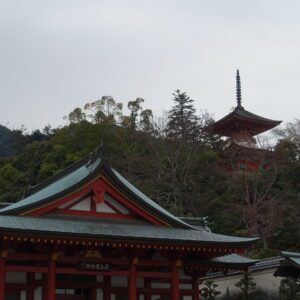
Since it rained during the tour of Daiganji, I gave up sightseeing in Miyajima and returned to Hiroshima city. Miyajima is a wonderful tourist destination that you will never get tired of no matter how many times you visit. Next time, I would like to revisit in fine weather after the major repair of the O-torii.
The public transportation I used is as follows.
Depart Miyajima Pier at 13:10, “bound for Miyajimaguchi Pier”, arrive at JR Miyajima Ferry at 13:20
Depart Miyajimaguchi Station at 13:34, Sanyo Line “bound for Shiraichi”, arrive at Hiroshima Station at 14:01, total fare Yen 600
7. Kokuzenji Temple
After arriving at Hiroshima Station, I went to Kokuzenji Temple, which is about a 10-minute walk away.
Kokuzenji Temple was opened in 1340 by Nichizo Shonin. In 1656, it became the Bodhisattva Temple of the Asano family due to the conversion of legal wife, Mitsuhime of Mitsuakira Asano. Mitsuakira was the second feudal lord of the Hiroshima domain. The main hall was built in 1671. It is estimated that the back of the warehouse was built at the same time. Both the main hall and the back of the warehouse were built by a castle carpenter of the Hiroshima domain, and are characterized by the use of castle construction techniques.

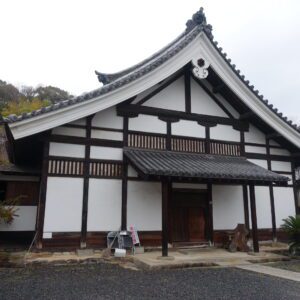
Kokuzenji was bombed by the atomic bomb in 1945, but the building only tilted and did not collapse. A relief station was set up at Kokuzenji Temple, and people who were seriously injured were brought in.
The main hall and the back of the warehouse are designated as national important cultural properties. There are only four national important cultural properties (buildings) in Hiroshima City: Fudoin Temple (which is also a national treasure), the Memorial Cathedral for World Peace, the Hiroshima Peace Memorial Museum, and the Kokuzenji Temple. In addition, Fudoin Temple and Kokuzenji Temple are the only national important cultural properties that were built before the atomic bombing.
The gate of Kokuzenji Temple is a cultural property designated by Hiroshima City.
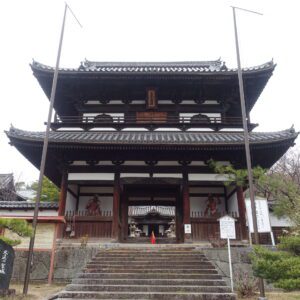
Note: The departure / arrival times, fares of transportation, admission fees, meal fees, etc. listed in the text are as of the time of writing the BLOG. Please check for yourself when you go on a trip as it may change in the future.
